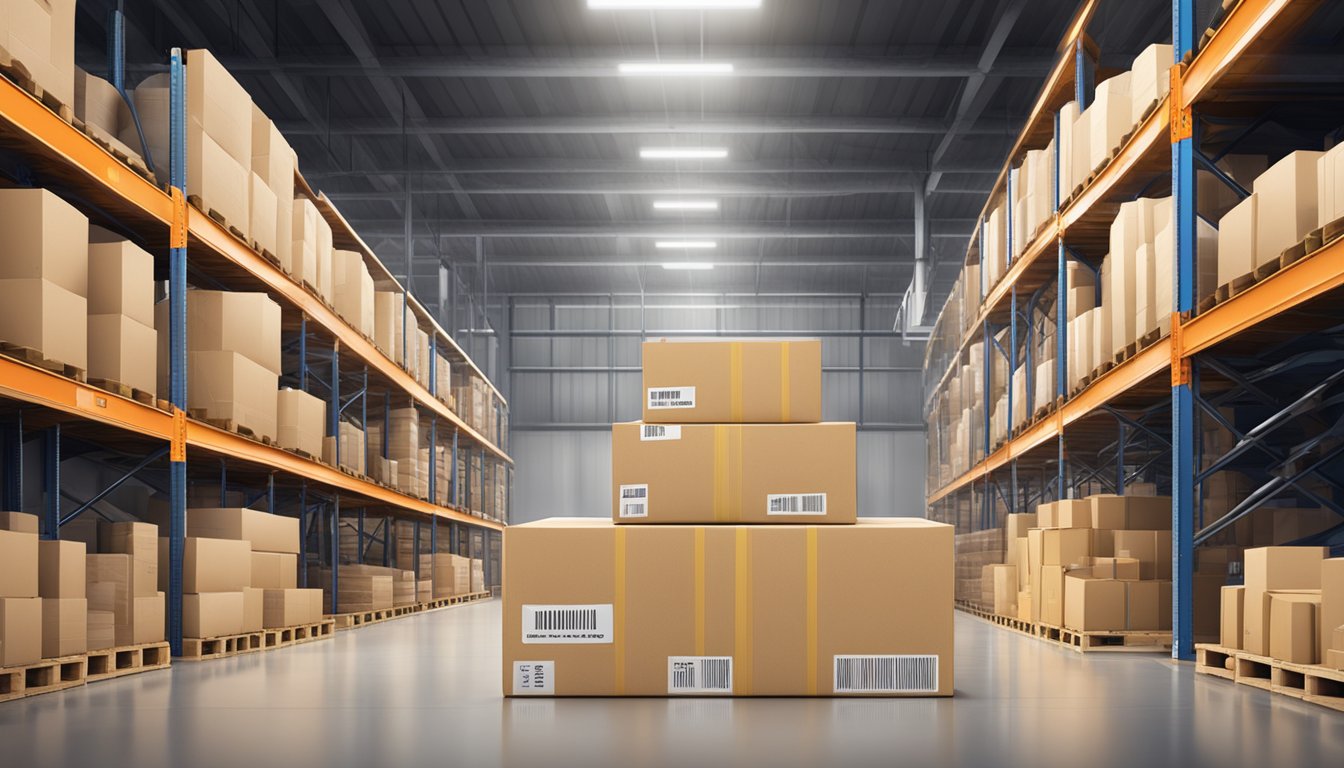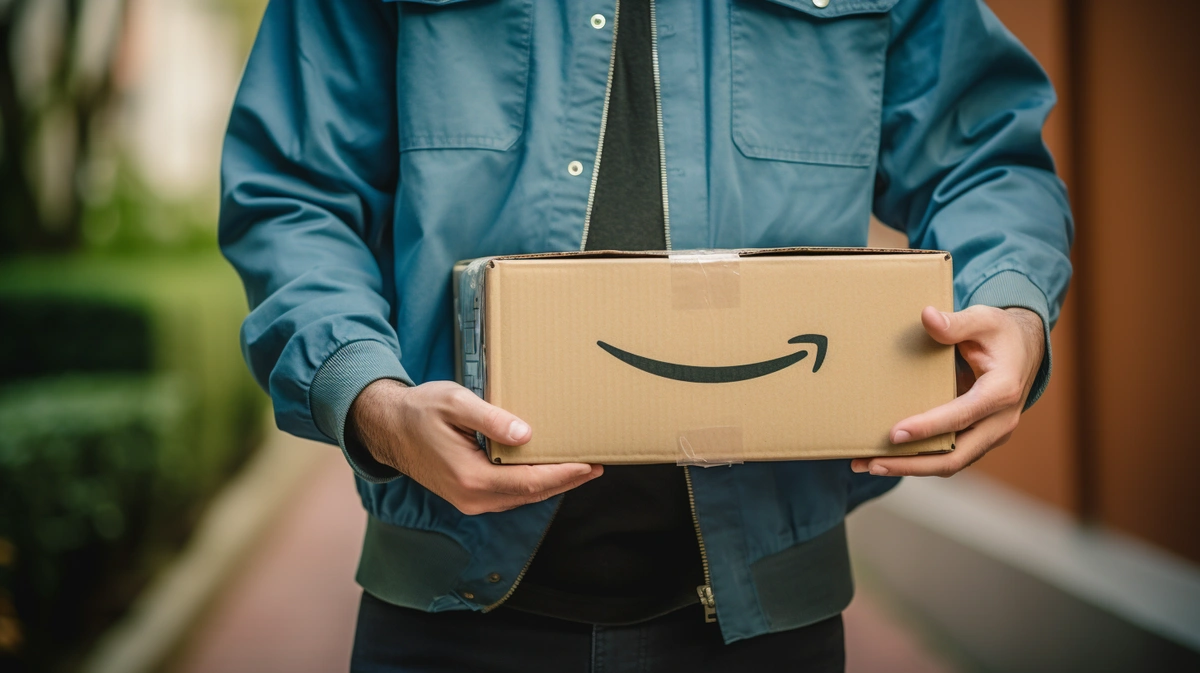Seller Fulfilled Prime is a program offered by Amazon that allows sellers to deliver directly to domestic Prime customers from their own warehouse. This program is designed to help sellers increase their sales by displaying the Prime badge on their offers, which indicates that they are committed to fulfilling orders with one-day and two-day delivery at no additional charge for Prime customers. By fulfilling orders themselves, sellers can save on storage and fulfillment fees and retain control over their inventory.

To join the Seller Fulfilled Prime program, sellers must meet certain requirements, including having a Professional selling plan, a history of fulfilling orders on time, and a track record of providing excellent customer service. They must also commit to using approved Prime delivery carriers and meeting Amazon's delivery performance targets. Sellers who meet these requirements can enroll in the program and start displaying the Prime badge on their offers.
While Seller Fulfilled Prime offers many benefits to sellers, it is important to note that it is not the only fulfillment option available. Amazon also offers Fulfillment by Amazon (FBA) and Merchant Fulfilled Network (MFN), which have their own advantages and disadvantages. By understanding the differences between these programs and choosing the one that best suits their needs, sellers can optimize their sales and grow their business on Amazon.
Understanding Seller Fulfilled Prime
Definition of Seller Fulfilled Prime
Seller Fulfilled Prime (SFP) is a program offered by Amazon that enables sellers to offer fast delivery to customers with the Prime badge. It allows sellers to deliver their products directly to domestic Prime customers from their own warehouse or fulfillment center. By displaying the Prime badge, sellers commit to fulfilling orders with one-day and two-day delivery at no additional charge for Prime customers.
Seller Fulfilled Prime vs. Fulfillment by Amazon
While Fulfillment by Amazon (FBA) is a program that allows sellers to store their products in Amazon's fulfillment centers, SFP allows sellers to fulfill orders with their own resources. With FBA, Amazon handles the storage, picking, packing, and shipping of products, while with SFP, sellers are responsible for these tasks.
Eligibility and Enrollment Process
To be eligible for SFP, sellers must meet certain requirements, such as having a Professional selling plan, a history of fulfilling orders on time, and a cancellation rate of less than 1%. Sellers can enroll in SFP through their Amazon Seller Central account. After enrolling, sellers must complete a trial period during which they must meet the program's performance metrics. If they meet these metrics, they can continue to offer SFP to their customers.
In summary, SFP is a program offered by Amazon that enables sellers to offer fast delivery to customers with the Prime badge by fulfilling orders with their own resources. While it differs from FBA, it offers benefits such as more control over the fulfillment process and lower fees. Sellers must meet certain eligibility requirements and complete a trial period to enroll in the program.
Requirements for Participation
To participate in the Seller Fulfilled Prime (SFP) program, Amazon sellers must meet specific requirements to ensure a seamless Prime experience for customers. These requirements encompass performance metrics, shipping requirements, and customer service standards.
Performance Metrics
To qualify for SFP, sellers must maintain a high level of performance in several key areas. These include:
- Order Cancellation Rate: Sellers must maintain an order cancellation rate of less than 0.5%, as measured over the trailing 30 days.
- On-Time Delivery Rate: Sellers must have an on-time delivery rate of at least 99% for all Prime orders, as measured over the trailing 30 days.
- Valid Tracking Rate: Sellers must provide valid tracking information for at least 99% of Prime orders, as measured over the trailing 30 days.
- Customer Service Inquiries: Sellers must respond to customer service inquiries within 24 hours, as measured over the trailing 30 days.
Shipping Requirements
Sellers must meet several shipping requirements to participate in SFP, including:
- Premium Shipping Options: Sellers must offer premium shipping options, such as two-day delivery, for all Prime orders.
- Handling: Sellers must handle and ship all Prime orders themselves without the use of a third-party fulfillment service.
- Supported SFP Carriers: Sellers must use one of the supported SFP carriers for all Prime orders. These carriers include UPS, FedEx, and USPS.
- Buy Shipping Services: Sellers must use Amazon's Buy Shipping Services for at least 99% of orders, as measured over the trailing 30 days.
Customer Service Standards
To participate in SFP, sellers must maintain a high level of customer service, including:
- Two-Day Delivery: Sellers must ensure that all Prime orders are delivered within two business days.
- Order Cancellation Rate: Sellers must maintain an order cancellation rate of less than 0.5%, as measured over the trailing 30 days.
- On-Time Shipment Rate: Sellers must ship all Prime orders on time, as measured over the trailing 30 days.
- Premium Shipping Options: Sellers must offer premium shipping options, such as two-day delivery, for all Prime orders.
- Tracking Rate: Sellers must provide valid tracking information for at least 99% of Prime orders, as measured over the trailing 30 days.
By meeting these requirements, sellers can enroll in the SFP program and offer their products to Amazon Prime customers with the same two-day delivery speed and shipping benefits as items fulfilled by Amazon.
Benefits of Seller Fulfilled Prime

Sellers who participate in the Seller Fulfilled Prime (SFP) program on Amazon can enjoy a variety of benefits that can help them increase their sales, control their inventory and fulfillment, and improve their profitability. Here are some of the key advantages of the program:
Prime Badge and Increased Visibility
One of the main benefits of the SFP program is the ability to display the Prime badge on your products, which can help increase their discoverability and boost sales. According to Amazon, Prime-eligible products typically see a significant increase in sales compared to non-Prime products. By participating in the SFP program, sellers can tap into the power of the Prime program and attract more customers to their listings.
Control Over Inventory and Fulfillment
Another advantage of the SFP program is the ability to maintain greater control over your inventory and fulfillment processes. Unlike the Fulfillment by Amazon (FBA) program, where Amazon handles all aspects of storage and shipping, SFP allows you to fulfill orders from your own warehouse or third-party logistics (3PL) provider. This can give you more flexibility and control over your inventory, as well as the ability to customize your shipping options and packaging.
Cost Savings and Profitability
Finally, participating in the SFP program can help you save on costs and improve your profitability. By fulfilling orders from your own warehouse or 3PL provider, you can avoid the fees associated with FBA and keep more of your profits. Additionally, since you are responsible for your own shipping and handling, you may be able to negotiate better rates with carriers and save on shipping costs.
Overall, the SFP program can be a valuable tool for sellers who want to take advantage of the Prime program and improve their sales, inventory control, and profitability. By displaying the Prime badge, maintaining control over their inventory and fulfillment, and saving on costs, SFP sellers can position themselves for success in Amazon's marketplace.
Operational Aspects of SFP
Seller Fulfilled Prime (SFP) is a program that enables third-party vendors to provide their customers with the sought-after two-day Prime shipping, all without relying on Amazon's warehousing infrastructure. In this section, we will discuss the operational aspects of SFP, including warehouse management, handling and preparation, and delivery and shipping solutions.
Warehouse Management
To participate in SFP, sellers must have their own warehouse or use a third-party warehouse to store inventory. Sellers must ensure that their warehouse is well-managed and that inventory levels are accurately tracked. It is important to have an efficient inventory management system in place to ensure that orders are fulfilled on time.
Handling and Preparation
Sellers must have a well-organized and efficient fulfillment process to ensure that orders are handled and prepared correctly. This includes picking, packing, and labeling orders accurately and efficiently. Sellers must also ensure that their products are packaged securely to prevent damage during shipping.
Delivery and Shipping Solutions
Sellers must have reliable delivery and shipping solutions in place to ensure that orders are delivered on time and in good condition. This includes having a shipping template that meets Amazon's requirements, as well as transportation solutions that can handle the volume of orders. It is also important to ensure nationwide delivery coverage to meet the needs of customers across the country.
In summary, to participate in SFP, sellers must have a well-managed warehouse, an efficient fulfillment process, and reliable delivery and shipping solutions. By ensuring these operational aspects are in place, sellers can provide their customers with the sought-after two-day Prime shipping, all without relying on Amazon's warehousing infrastructure.
Customer Experience with SFP
Seller Fulfilled Prime (SFP) is a program that allows third-party sellers to offer Prime shipping directly to customers from their own warehouse or using a third-party fulfillment center. But how does this affect the customer experience? Let's take a closer look at the following subsections.
Guaranteed Delivery and Free Shipping
One of the main benefits of SFP is that customers can enjoy Prime shipping benefits without having to purchase products through Amazon's own fulfillment centers. With SFP, customers can expect guaranteed delivery dates and free shipping, just like they would with Amazon Prime. According to Red Stag Fulfillment, SFP sellers must maintain a delivery performance rate of at least 97% to remain eligible for the program.
Customer Service and Returns
While Amazon handles post-order customer service for products fulfilled through their own fulfillment centers, SFP customers will need to contact the seller directly for any customer service inquiries or returns. This means that the quality of customer service and the returns process may vary from seller to seller. However, SFP sellers are required to offer free returns within 30 days of delivery, so customers can still enjoy a hassle-free returns process.
Customer Satisfaction and Feedback
Customer satisfaction is crucial for any business, and SFP sellers are no exception. To ensure customer satisfaction, SFP sellers must maintain a positive feedback rating of at least 95% over the past 90 days. This means that customers can expect a high level of service and quality products from SFP sellers.
In summary, SFP offers customers the convenience of Prime shipping benefits without having to purchase products through Amazon's own fulfillment centers. Customers can enjoy guaranteed delivery dates and free shipping but will need to contact the seller directly for any customer service inquiries or returns. SFP sellers are required to maintain a high level of customer satisfaction, ensuring that customers can expect quality products and services.
Challenges and Considerations
Sellers who opt for Seller Fulfilled Prime (SFP) must navigate several challenges and considerations to maintain eligibility for the program. Here are some of the most important ones:
Managing Costs and Fees
One of the most significant considerations for SFP sellers is the cost of shipping and handling. SFP sellers are responsible for all shipping costs, including those for returns, and must maintain a high level of customer service. Additionally, SFP sellers must pay for their own storage facilities, which can add up quickly.
Maintaining Performance Metrics
To remain eligible for SFP, sellers must maintain high-performance metrics, including on-time delivery, cancellation rates, and order defect rates. Failure to maintain these metrics can result in the loss of SFP eligibility, which can be a significant blow to a seller's business.
Navigating Complexities of SFP
SFP sellers must be prepared to navigate the complexities of the program, which can include special handling requirements, preparation standards, and other considerations that can vary depending on the product. Additionally, SFP sellers must be able to manage their own inventory and order fulfillment, which can be challenging for some sellers.
Despite the drawbacks of SFP, many sellers find that the benefits of the program outweigh the costs. SFP can be an excellent way to boost sales and increase profits, particularly for sellers who are already experienced in managing their own inventory and fulfillment.
Strategic Insights for Sellers
Sellers on Amazon have a range of options when it comes to fulfilling orders, but not all options are created equal. Seller Fulfilled Prime (SFP) is a program that allows sellers to fulfill their own orders while still being able to offer Prime shipping to customers. Here are some strategic insights for sellers looking to make the most of SFP:
Marketplace Dynamics and Competition
Amazon is a highly competitive marketplace, and sellers need to be strategic in order to succeed. SFP can help sellers stand out from the competition by offering fast and free shipping to Prime members. However, it is important for sellers to keep an eye on their competitors and adjust their pricing and product selection accordingly.
Product Selection and Sales Strategies
Sellers need to be strategic when it comes to product selection and sales strategies. They should focus on high-quality products that are in demand and have a good profit margin. Sellers should also consider offering bundles or variations of their products to increase exposure and sales.
Leveraging Technology and Staff
Sellers can leverage technology and staff to improve their SFP operations. They should use inventory control software to manage their stock levels and avoid stockouts. They should also use the Prime shipping template to ensure that their orders are processed quickly and efficiently. Finally, sellers should consider hiring additional staff to help with order fulfillment during periods of high order volume or unpredictable demand.
Overall, SFP can be a great way for sellers to offer fast and free shipping to their customers while still maintaining control over their inventory and operations. By being strategic and leveraging technology and staff, sellers can make the most of this program and increase their conversion rates and exposure on the Amazon marketplace.
Frequently Asked Questions
What are the requirements to qualify for Seller Fulfilled Prime?
To qualify for the Seller Fulfilled Prime program, sellers must meet certain requirements. According to Amazon, sellers must demonstrate a track record of fulfilling orders on time, maintain a high level of customer service, and have a cancellation rate of less than 1%. Additionally, sellers must be able to offer nationwide coverage for their products and be able to deliver orders within two days.
How does Seller Fulfilled Prime impact shipping responsibilities?
With Seller Fulfilled Prime, the seller is responsible for shipping and fulfilling orders. This means that the seller must have their own warehouse or storage facility to store products, and they will be responsible for picking, packing, and shipping orders on time. However, Amazon provides sellers with access to discounted shipping rates and allows them to use Amazon's buy shipping service to purchase shipping labels.
What are the cost differences between Seller Fulfilled Prime and Amazon FBA?
The cost differences between Seller Fulfilled Prime and Amazon FBA can vary depending on the seller's specific situation. With Seller Fulfilled Prime, sellers are responsible for all the costs associated with shipping and fulfilling orders, including storage, packing materials, and shipping fees. On the other hand, Amazon FBA charges fees for storage, picking, packing, and shipping orders, but sellers do not have to worry about these costs themselves.
Can sellers trial Seller Fulfilled Prime before fully committing?
Yes, sellers can trial the Seller Fulfilled Prime program before fully committing. According to Amazon, sellers can enroll in a trial period to test the program and determine if it is a good fit for their business. During the trial, sellers must meet certain performance metrics to maintain their eligibility for the program.
What benefits does the Seller Fulfilled Prime badge offer to sellers?
The Seller Fulfilled Prime badge offers several benefits to sellers. First and foremost, it allows sellers to offer Prime-branded shipping to their customers, which can help increase sales and customer loyalty. Additionally, the program provides sellers with access to discounted shipping rates and allows them to use Amazon's buy shipping service to purchase shipping labels.
How does Seller Fulfilled Prime compare to Fulfillment by Merchant (FBM)?
Seller Fulfilled Prime and Fulfillment by Merchant (FBM) are both programs that allow sellers to fulfill orders themselves. However, Seller Fulfilled Prime offers the added benefit of allowing sellers to offer Prime-branded shipping to their customers. Additionally, the program provides sellers with access to discounted shipping rates and allows them to use Amazon's buy shipping service to purchase shipping labels. On the other hand, FBM does not offer these benefits, but it may be a more cost-effective option for some sellers.



 Scale Insights Team
Scale Insights Team

